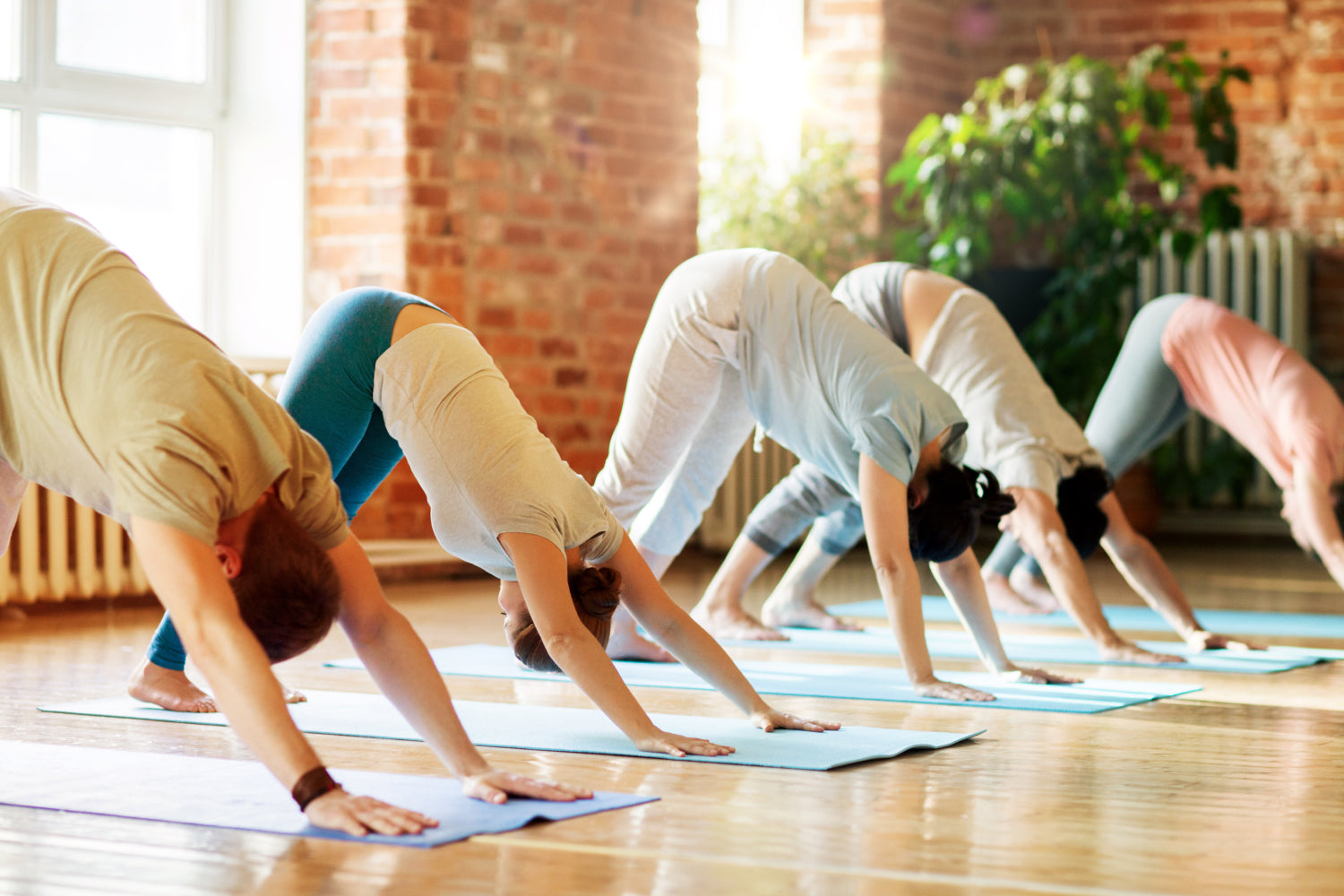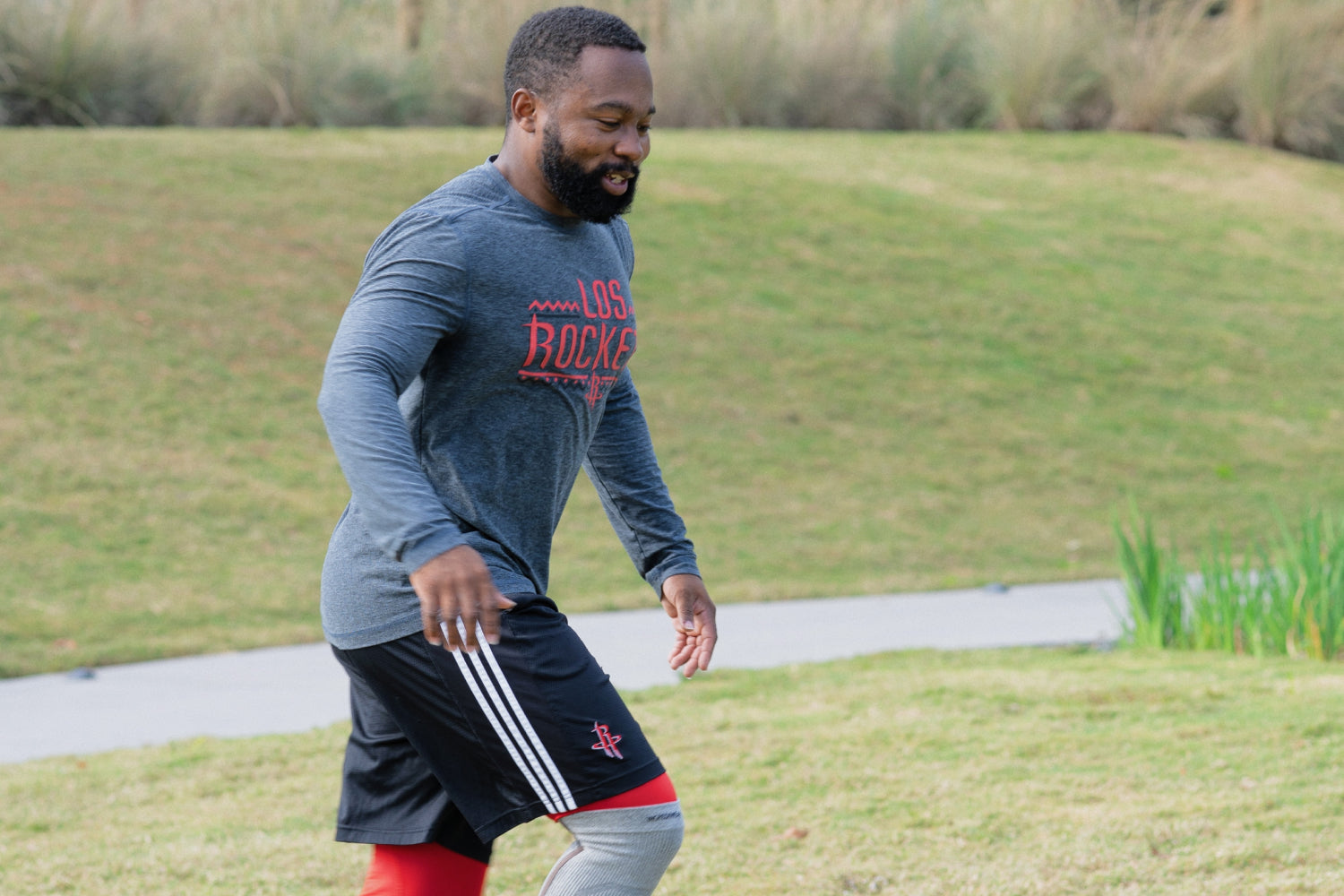Medically Reviewed By | Dr. Kate Panawash, PT, NCS, DPT
Most elite athletes know that working out is not the most important part of their training program. The best athletes understand that recovery is just as important, if not more important, than the training itself. After all, an efficient recovery routine is vital to high performance when training. Recovery helps to boost athletic performance and promote muscle growth.
You can get the most out of your training by developing an effective recovery strategy. Fortunately, it is easy to create a good strategy when you know what tips to incorporate.
The Best Recovery Techniques for Athletes
Recovery for athletes is an essential part of seeing progress in your exercise. However, an inefficient and unthought-out recovery strategy will not support the best athletic performance. The following are some of the best techniques for athletes to include in their recovery strategy.
Incorporate Active Recovery
Active recovery is the process of using an easy physical activity to promote muscle recovery. Active recovery helps boost blood flow through your body, which helps support the transfer of nutrients for better muscle recovery. The blood flow boost also helps remove this waste from your muscles.
This technique can look different for different athletes depending on their preferred activity. Runners may want to take a mile jog at a leisurely pace, while cyclists might want to take a short, easy ride on their bike.
No matter your preferred activity, the key to active recovery is ensuring that the activity is easy. The focus should be on recovery, not on pushing yourself even more.
Most athletes incorporate a recovery run later in the day after the official training run. Usually, active recovery should not be part of your rest day routine and should only be used on days you exercise already.
Rest
No matter what your post-exercise recovery process is, you will not see the progress you hope for if you don’t take adequate time to rest. Although active recovery is a good strategy for getting blood flow to your muscles with lighter intensity, you also need to allow your body to rest. Rest is just as important as activity, and everyone should have at least one or two rest days built into their weekly training program.
Muscle recovery and growth happen during rest as your body can use the lack of activity to rebuild the muscle fibers you tear during your workouts. Elite athletes know how to stagger their training program to give at least a 72-hour window between working out the same muscle group.
Rest also allows you to avoid burnout so you can show up to your workout feeling energized and get the most out of your training. Recovery time differs for everyone, but you probably aren't resting enough if you do not feel fresh when you return to activity after your rest day.
“It’s important to understand that rest does not mean you should do nothing. Enjoy a leisurely stroll in nature with family, do a light yoga routine, take time to stretch, or do some breathing exercises. These are all examples of things that can be incorporated to refill your cup between intense training sessions,” notes Katelyn Panawash, Doctor of Physical Therapy (DPT) and Board Certified Neurologic Clinical Specialist (NCS).
Sleep
On top of taking occasional breaks from training, you should also get adequate sleep. Sleep quality can have a significant impact on athletes and their athletic performance. Your body uses the time during sleep to repair muscle damage, promote muscle growth, and re-energize. Above all else, well-rested athletes have more energy to power through their workouts, leading to more progress.
The average person should sleep seven to nine hours a night for optimal recovery and sports performance. It is also important to practice good sleep hygiene for the most restful sleep — sleep in a dark room, maintain a consistent sleep schedule, and avoid screens before bed. “If your schedule allows, try to complete your workouts two or more hours before going to bed to help your body wind down,” says Panawash.
Stretch
Stretching should be a part of everyone’s post-exercise routine. During high-intensity training and activity, the muscles are forced into a constant state of tension. Stretching helps relieve muscle tension and promote blood flow through them.
Stretching also helps prevent future injury as stretches help the muscles stay loose and move in different directions. Therefore, consider stretching both before and after your activity. Before an activity, try dynamic stretches to loosen up your muscles and incorporate static stretches after. “Consider doing movements that are the same or similar to what you will be doing in your workout to directly target those areas,” Panawash says. “If you are looking to optimize your time and routine, consider working with a Physical Therapist to help create something targeted to your specific needs.”
Try Cold Water Immersion
Cold water immersion therapy is a type of cold water therapy that helps support muscle recovery after a high-intensity workout. Sitting in an ice bath is the most popular and practical way to practice cold water immersion.
Cold water immersion therapy helps to boost blood flow and reduce muscle soreness. On top of these benefits, the process can also promote a more positive mood and better energy levels.
Other similar strategies include cryotherapy and hydrotherapy, which help reduce muscle tension and minimize inflammation.
Drink Water
Water is great for your recovery even when you aren’t bathing it. Hydration is vital for ensuring your body can flush out all the waste your muscles create during activity. Drinking water also helps athletes to perform at a high level.
Athletes should drink water throughout the entire day. A good rule is to drink at least eight ounces of water an hour. However, if it is hot outside or you are engaging in high-intensity activity, you should aim for closer to 12 ounces.
“Depending on the intensity, workout length, and environment, it may be beneficial to include some electrolytes with your water. Look for packets or drinks made for replenishing electrolytes, and read the nutrient labels to understand the amount of sugar in certain options,” adds Panawash.
Fuel Your Body
After a workout, you can support your recovery by giving your body the right fuel. For effective recovery, nutrition is a significant key to success.
Your nutrition should include a combination of protein, carbohydrates, and healthy fats. During high-intensity workouts, your body’s glycogen stores, a type of glucose used as an energy source, are depleted. Eating carbs helps to replenish these stores and provides your body with energy for muscle repair.
Incorporating a range of complete proteins in your diet will also help support protein synthesis, which is a vital process for promoting muscle growth and repairing muscle damage.
Try Supplements
Fueling your body with the right nutrients is crucial to any training program. However, sometimes you need more support to get the nutrients you need for optimal recovery. Two of the best go-to supplements for athletes are protein powder and creatine.
Protein powder has a significant amount of protein, vitamins, and amino acids to support optimal protein synthesis. Meanwhile, creatine, an amino acid, can help enhance recovery in athletes and promote better performance.
Have a Post-Exercise Routine
The best thing you can do to support your muscle recovery is to establish a routine after each training session. A post-exercise routine can include having a protein shake, eating a meal, stretching, and taking a cold shower.
The tips on this list all make great additions to a recovery routine, but it is important to remember to use them. It can be easy to perform your activity and consider yourself done until your next exercise session. By establishing a recovery routine, it becomes second nature to incorporate these strategies into your training program and helps you prioritize recovery.
Use Recovery Gear
The recovery process does not have to be a hassle to maintain. Sometimes, the recovery process can be as simple as wearing the right gear. An excellent example is Incrediwear. Incrediwear sleeves and braces are invaluable tools in supporting recovery for athletes, offering solutions for different parts of the body, like ankle sleeves and elbow sleeves.
These wearable wellness products have semiconductor elements that release ions when activated by body heat. When the ions release, they create molecular vibrations that improve blood flow, which supports better nutrient transport to the muscles and more efficient removal of by-products in the muscles.
Incrediwear technology works better than other recovery modalities, like compression garments, by optimizing your body’s natural healing process. In doing so, these products help athletes' recovery time and support their performance.
Experience the Best Tool for Recovery for Athletes
Effective recovery methods are essential for athletes looking to perform at a high level. Recovery allows the muscles to rebuild and your energy levels to replenish for peak performance. For an extra boost in your recovery routine, turn to Incrediwear and our collection of recovery wear sleeves and braces.
Whether you need help supporting the recovery process or want to improve your exercise performance, Incrediwear can help without restricting your range of motion. Explore our complete collection, from knee sleeves to shoulder braces, to see all of the ways you can support your progress and well-being.
Sources:
The importance of sleep for performance and recovery | HPRC
Read more

Medically Reviewed By | Dr. Kate Panawash, PT, NCS, DPT Yoga practice is a form of exercise for supporting your strength and helping you live a healthier life, but it can serve many excellent purpo...

Medically Reviewed By | Dr. Kate Panawash, PT, NCS, DPT Yoga practice is a form of exercise for supporting your strength and helping you live a healthier life, but it can serve many excellent purpo...






Leave a comment
All comments are moderated before being published.
This site is protected by hCaptcha and the hCaptcha Privacy Policy and Terms of Service apply.